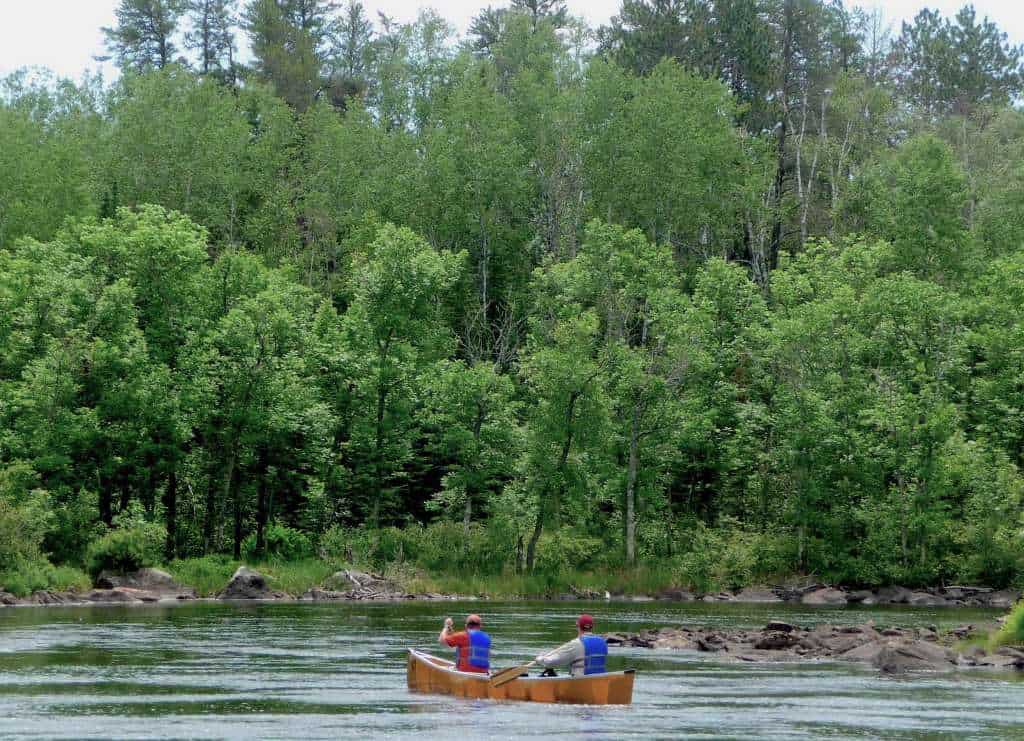
The Superior National Forest announced on Friday that it will no longer conduct an in-depth environmental review of a proposal to remove federal lands in the Boundary Waters watershed from mining.
Just over a year ago, in the final weeks of the Obama administration, the agency began to develop an Environmental Impact Statement, examining broad effects of mineral exploration and mine development. Now, the Forest Service will perform an Environmental Assessment, a narrower and less rigorous review.
After receiving 90,000 comments during a scoping period last year, the Forest Service says no significant environmental impacts were raised.
“While the science indicates significant environmental impacts are unlikely to result from the proposed withdrawal, I am deeply aware of the controversy regarding socio-economic implications,” said Superior National Forest Supervisor Connie Cummins. “Our specialists are working hard to ensure the EA accurately describes all the facts of the proposal, to aid the Secretary of the Interior in his decision.”
Political pressures
Under the proposal to withdraw lands in the watershed, about 234,000 acres of Superior National Forest lands that drain toward the Boundary Waters would be off-limits to mining for 20 years (the maximum legally allowed). It would effectively block Chilean company Antofagasta PLC from developing the Twin Metals mine next to the South Kawishiwi River.
The diminished review caused immediate outrage among wilderness advocates, environmental groups, and some politicians.
“It’s terrible that the Trump Administration is putting the financial interests of the Chilean mining conglomerate, Antofagasta, ahead of protecting the Boundary Waters Canoe Area for generations of Minnesotans and other Americans,” Minnesota Governor Mark Dayton said in a statement. “I urge the Administration to disclose who persuaded it to steamroll responsible review and protection of this priceless natural resource in favor of copper-nickel mining profits.”
The Forest Service move is in line with legislation sponsored by Rep. Tom Emmer of Minnesota’s Sixth District. Emmer’s bill to block the mining moratorium passed the U.S. House in November but did not have support in the Senate.
At the time, Emmer said he thought the only way forward might be for the Trump administration to intervene. Minnesota’s Speaker of the House Kurt Daudt had also called on Trump to clear the way for mining shortly after the President’s inauguration. Emmer applauded the announcement on Friday.
“These steps taken by the Forest Service are encouraging,” Emmer said in a statement. “I am hopeful that proposals to mine in Minnesota will finally be allowed to start the rigorous federal and state environmental approval processes that must still be completed before any mining actually begins.”
Reversal of fortunes
The decision also comes on the heels of another federal decision late last year that restored Twin Metals’ mineral leases, which had been cancelled by the Obama administration at the same time as the moratorium was proposed.
Wilderness advocates decried the decision, saying it would weaken the review and could provide an incomplete picture of the risks of copper-nickel mining in a water-rich environment.
The Save the Boundary Waters campaign said the wilderness is too valuable for the scaled-back assessment.
“There’s no room for shortcuts when it comes to the Boundary Waters,” said Save the Boundary Waters Campaign Manager Doug Niemela. “We are very concerned about the U.S. Forest Service’s decision to downgrade the study on the risks to the Boundary Waters from an Environmental Impact Statement to an Environmental Assessment. All Americans, no matter how they feel about this issue, deserve the most thorough and rigorous analysis possible to determine the risks of sulfide-ore copper mining near the Boundary Waters.”
Collecting comments, analyzing impacts
The Forest Service also announced it will continue collecting public input on the proposal until Feb. 28. Additional information, documents, and a comment form are available on the agency’s website.
It anticipates completing the Environmental Assessment by the end of the year. The Bureau of Land Management will then use the study make a recommendation on the proposed mining moratorium for Interior Secretary Ryan Zinke. If the mineral withdrawal is not approved, mineral leasing could resume by January 5, 2019.

